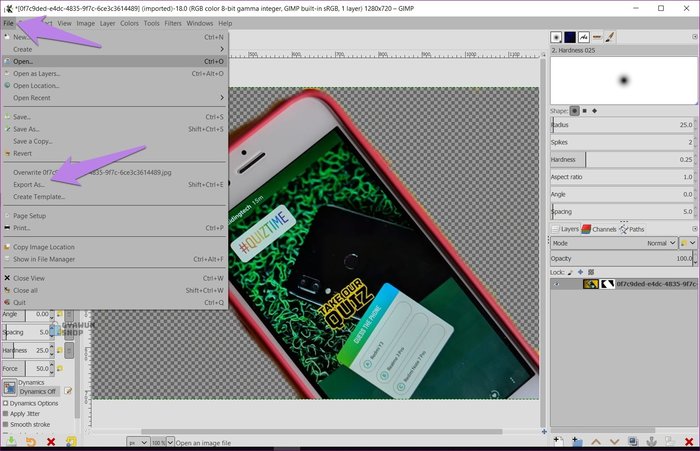

This method works on the basis of color similarity or difference. This method is time-consuming compared to others and will require you to have a good level of precision. You may need to resize the eraser brush size to larger when erasing further from the image subject (the area that you want to retain) and to a smaller size when closer to it so as not to accidentally remove unintended parts. This will automatically erase those areas to transparency. Then click on the image and drag the eraser over the areas you want to remove. Select the eraser tool under the toolbox. If it is already added, you will see "Alpha" as the fourth entry after Red, Green, and Blue. The alpha channel allows GIMP to track which areas of your image are transparent and which are opaque.Īnother way of knowing if the image already has an alpha channel added to it is to check on the Channels tab next to the Layers and Paths tabs in the bottom right of GIMP. To prevent this and remove the background completely to transparency, that's why we add an alpha channel. If there is more than one layer, make sure the layer whose background you want to remove is the selected one when adding the alpha channel.īy default, if you erase any area on the image, it will take the selected background color instead of becoming transparent.

If the " Add Alpha Channel" option is greyed out, then it means that channel has already been added to the image so you can't/don't need to add it again. To do so, open the Layer menu, then the Transparency submenu, and click on the " Add Alpha Channel" option. Step 2: Add an alpha channel to the image layerĪdd an alpha channel to the image layer (if it hasn't already been added).
#Remove background gimp Pc#
To open the image whose background you want to remove in GIMP, click and drag it from its folder to GIMP.Īnother way is to open the File menu and then click on the Open option to select the image file from your PC storage.Īlternatively, you can right-click on the image in its folder and select the option to open it with GIMP. Regardless of the tool you use, the first two steps are always the same.
#Remove background gimp how to#
I will demonstrate to you how to do it with each of the above tools. The choice of the tool to use basically depends on the nature of the image you are working with, or what part you want to remove or retain. There are tons of tools in GIMP that can be used to remove the image background to transparency in GIMP such as: Erasing image background to transparency in GIMP In this article, you will learn how to erase the images' backgrounds to transparency using the GIMP image manipulation program. This makes them easily edited and improved which makes them great for marketing purposes.Īmong many other applications of such images is in improving the user interface (UI) in web, mobile, and desktop applications development. Images with transparent (see-through) backgrounds can easily be placed on different backgrounds and locations. This makes the image take the background of the other image it is placed on. This involves combining two or more images into one, where the background of one or more images has been erased to transparency. These pictures may look very real but are usually a product of photo editing/manipulation. Or a picture of your friend in the company of someone you are sure they have never met. For whatever reason, you most definitely have at some point wanted to do it.įor instance, you may have seen pictures of someone in a place where you are pretty sure they have never been. John | How to erase/remove image background to transparency in GIMPĮrasing the background elements of images to transparency is very applicable in many instances.


 0 kommentar(er)
0 kommentar(er)
